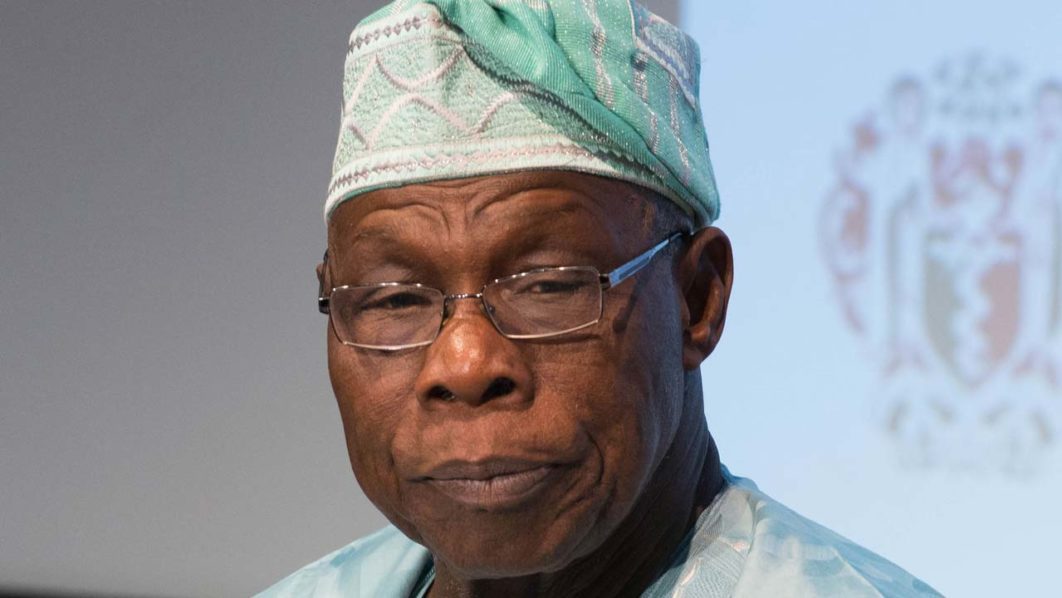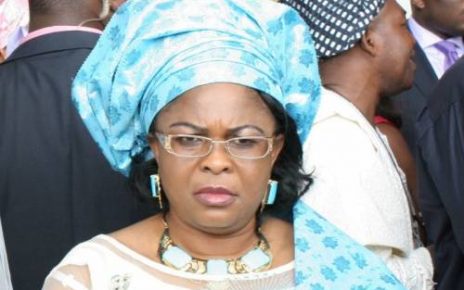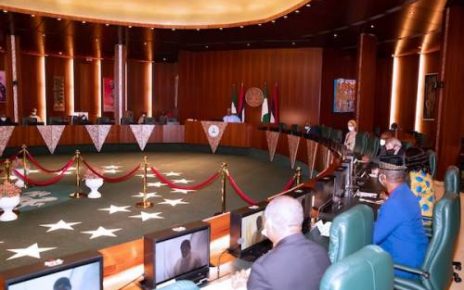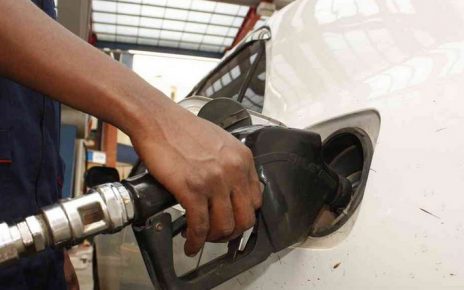Nigeria – Promoters of the Vision 20:2020 had envisaged that Nigerians would wake up to the New Year 2020 in fanfare and heavy fireworks to celebrate the country’s achievement of becoming one of the 20 best economies in the world.
This was topmost among the goals of this grand national development plan that grabbed public imagination since it was launched 11 years ago.
Conceived by former President Olusegun Obasanjo, in 2006, the blueprint of Vision 20:2020 was launched in September 2009 by late President Umaru Yar’Adua’s administration amidst fanfare.
The main organs responsible for the development of the vision were: The National Council on Vision 2020, the lead organ, chaired by the president; the National Steering Committee which consisted of about 70 persons; the National Technical Working Group comprising about 20-25 experts in specified thematic areas; the Stakeholder Development Committee which included state governments, federal Ministries, Departments and Agencies (MDAs) and other key institutions.
But at the expiration of the tall target on January 1, 2020, Nigeria was not among the world’s top 20 economies in terms of Gross Domestic Product (GDP). It was the 28th largest economy in the world in 2019, according to data from the International Monetary Fund (IMF).
The long-term plan did not make a dent on Nigeria’s developmental challenges as many Nigerians are in worse socioeconomic conditions than ever before.
Nigeria now has the highest number of people living in extreme poverty across the world, with an estimated 86.9 million people said to be living on less than N381 a day. The World Poverty Clock said the figure increases every six months.
That several economic malaises including insecurity, epileptic power supply, week infrastructure and institutions still plague the country suggests that the broader objectives of the goal are out of reach.
A review published by the ICIR found that 10 specific parameters of the target were not met.
Experts have pointed to a series of long-term trends, from poor execution to weak evaluation as some reasons why the vision failed to meet its mandate.
But what actually happened to Vision 20:2020? This is a question even the advocates of the audacious goal are yet to answer considering the pomp and pageantry that heralded its offtake.
Misplaced priority
From onset, critics queried the rationale behind the major target of the vision – propelling Nigeria into the league of 20 best economies. This translates to having a GDP of at least US$900 billion by 2020 compared to about US$212 billion as at 2008.
Today, Nigeria is number 28 in terms of GDP size globally but yet has the highest number of people living in abject poverty.
The country is among the top 10 countries in the ‘misery index’. Nigeria has one of Africa’s highest unemployment rates with 23 per cent of its population—18 million of the labour force—currently without jobs.
The challenge of inequality is at crisis levels in Nigeria.
The richest man in the country earns about 150,000 times more from his wealth than the poorest 10 per cent of Nigerians spend on average on their basic consumption in a year, according to Oxfam 2019 inequality index.
As a result of its decrepit health sector, Nigeria is at the bottom of most world health indices – One of the worst places in the world to bear a child and or cater for infant or mother; has the world’s third-lowest life expectancy rate of 55 years; has the second largest number of stunted children in the world, to mention but a few.
Currently, Nigeria has over 10 million out-of-school children.
Critics should, therefore, be excused for questioning what is sacrosanct about $900 billion GDP and what, indeed, is the guarantee that such achievement would address the basic needs of Nigerians.
“The target of being among the top 20 economies will not help Nigeria,” said Nnimmo Bassey, a renowned environmental activist. “This is because of the current measure of growth is defective and doesn’t capture the state of affairs for citizens anywhere in the world.”
“GDP has been defined as Gross Domestic Problem by an Italian politician.
“Nigeria needs to define steps needed to be taken to meet the basic needs of her citizens and not hinge its development plans on GDP figures which does not impact on current realities on the ground,” he noted.
American billionaire and philanthropist, Bill Gates, during his visit to Nigeria in 2018 said the country’s economic plans do not have the ability to address the unique needs of Nigerians at present.
He said the Nigerian Government’s Economic Recovery and Growth Plan (ERGP) ”prioritises physical capital over human capital”.
Mr Gates said the most important choice Nigerian leaders can make is “to maximise the country’s greatest resource, which is the people.”
One-sided vision?
Frank Tie-Tie, a human rights lawyer, described vision 2020 as a “one-sided” vision that was designed to fail.
“It failed because it was meant to fail. Citizens did not buy into it; they were not carried along,” he explained.
“There was a serious disconnect between the visionaries and the citizens. Also, the corporate citizens did not buy into it, the political class did not believe in it because they did not develop it, it’s more of a technical document and they don’t even understand it.
“We have accidental politicians who often drive personal agenda over visions on a piece of paper. The target was only cosmetics and there was no commitment to making it a success.”
Lanre Suraju, an anti-corruption advocate, said the goal was “always propaganda and more of a campaign to gain some measure of credibility at both local and international level for them (government) to be considered to be working towards an agenda.”
An analyst, Ayo Olukotun, in an article published by Punch Newspaper likened the audacious goal as a “beautiful architectural drawing that signaled the possibilities of utopia, bereft, however, of precise or significant steps towards laying a foundation, much less, building the proposed edifice”.
‘No clear relationship with similar targets’
One major criticism leveled against the blueprint was that its drafters failed to harmonise the vision with several other national plans running at the time. For one, it was the perceived failure of Vision 2010 – launched in the 1990s under the military rule – that signaled the introduction of vision2020.
Then also, there were the National Economic Empowerment and Development Strategy; The United Nations Millennium Development Goals; Yar’Adua’s 7-Point Agenda; Goodluck Jonathan’s Transformation Agenda, among several others.

Though these targets had similar objectives, they ran disjointedly by different hands.
No progress review, no scorecard assessment
The policy blueprint of the vision broke down the processes and stages to achieving the target to include building a solid foundation between 2008 and 2010; achieving the Millennium Development Goals (MDGs) en route 2020 between 2011 and 2015, and the eventual attainment of one of the global best 20 economies in the world by 2020.
But until the vision joined the graveyard of several unmet national targets, there was no planned review examining the progress made on any of the projected phases of implementation.
“There was no monitoring mechanism. Right now we don’t even have any information from either the government or the proponents of the vision to say ‘oh’ we can’t meet the vision again but here is where we are,” Mr Suraju said.
“The implementers are no longer committed to the vision and no ministry or agency was saddled with the responsibility to monitor the process.
“Nobody can give an account of what has happened so far despite the huge resources wasted in launching the target.”
It took the commissioning of about 1000 economic experts who worked for nine months to produce just the draft document Vision 20:2020 that gulped millions of naira.
The offtake of the programme also involved the recruitment of hundreds of experts, domestic and international consultants and local support staff.
Several committees were set up and agencies were established.
“Never has so many resources been committed by so many to such a scanty outcome,” Tayo Oke wrote in an article published on Punch Newspaper few days ago.
Abandoned
It is not uncommon for successive governments and political parties to abandon projects started by their predecessors. Similarly, this was the case of the vision.
Even President Yar’Adua focused more on his seven-point agenda. While President Jonathan was fixated with his transformation agenda, President Muhammadu Buhari launched the ERGP upon assumption of office.

“For you to have a long-term plan that will outlive your tenure in office, it must have an implementation strategy and design that is not just about the presidency or his government,” Mr Suraju said. “It should be guided by the philosophy of a political party that is actually responsible for championing it. It should resonate with each successive government.”
“Even though Vision 2020 was an agenda of the Peoples Democratic Party (PDP), there was no party buy-in and people involvement and that reduced the credibility of the programme.
“The subsequent governments could not even promote it, much less support or work towards it.”
![President Muhammadu Buhari [Photo: Presidency]](https://i1.wp.com/media.premiumtimesng.com/wp-content/files/2020/01/Nigerian_President_3568850b-e1578419437957.jpg?w=600&h=336&ssl=1)
In his New Year Day letter to Nigerians, Mr Buhari highlighted key tasks his government would undertake in 2020 but kept mute on the botched vision.
No effort towards tackling developmental challenges
Critics argued that the target of Vision 2020 was way too ambitious considering Nigeria’s acute developmental challenges and huge dependency on oil.
But promoters said the dream was achievable based on the assumption that the country’s resources are enough and would be properly managed to meet the target.
The plan was to make efficient use of human and natural resources to achieve rapid economic growth; and to translate economic growth into equitable social development for all citizens.
For instance, in line with one of the indicative parameters in the blueprint, the government was to embark on a massive upgrade of infrastructure in several sectors.
To achieve that, experts, said Nigeria would need an estimated N32 trillion. However, there was never a line in the budget for the target.
The government turned to the private sector via a Public-Private Partnership, PPP, arrangement to undertake a massive infrastructure development between 2010 and 2013.
But not many investors keyed in either because of existing challenges such as insecurity and poor electricity supply or of past experiences with PPPs.
In the past decade, most PPP initiatives of the government failed or were stalled by disagreements and litigations.
Read Also – Mahmood Ahmadu To Grace Euro Knowledge Leadership Award
Several initiatives on economic diversification have not helped too as the country is still heavily dependent on oil which was why it slid into recession three years ago when oil prices plummeted.
“If the level of infrastructure has not decayed beyond what it was 10 years ago, it has not significantly improved,” said Mr Suraju
Source – https://www.premiumtimesng.com/news/




